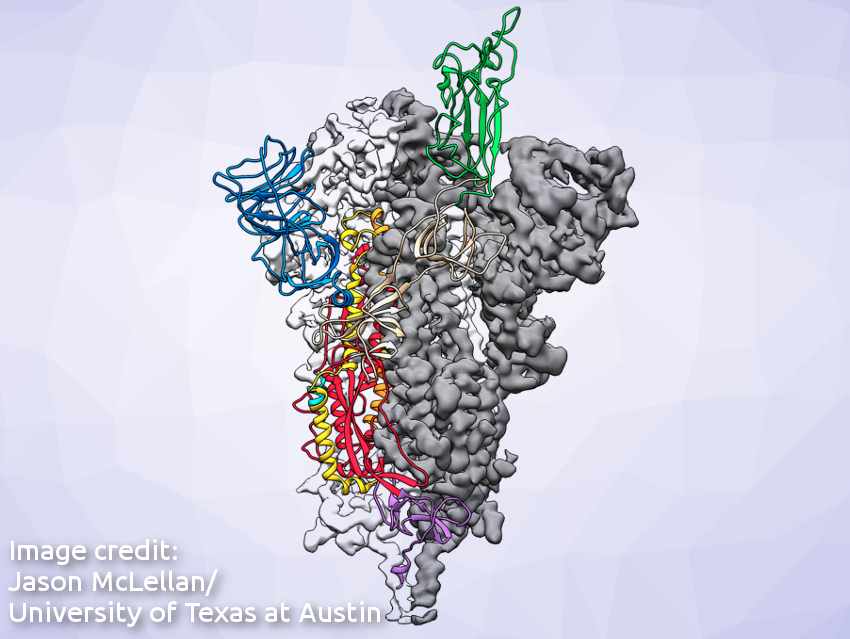Coronaviruses, such as the one that causes the current outbreak of COVID-19, have glycoprotein “spikes” on their surface. These spikes help the virus to enter host cells by fusing the virus and cell membranes. This important function makes the spike proteins promising targets for medical treatments.
Jason S. McLellan, The University of Texas at Austin, USA, and colleagues have determined the structure of the extracellular part of the spike protein of the coronavirus that causes COVID-19. The team used the previously reported genome sequence of the virus to produce the spike protein using a human cell line. They introduced two mutations to stabilize the expressed protein. The team then used cryogenic electron microscopy (cryo-EM) to obtain a 3D reconstruction of the protein (pictured) with a resolution of 3.5 Å. Cryo-EM uses very low temperatures to allow the determination of biomolecular structures at almost atomic resolution.
The team found that the protein consists of two subunits, one of which is the receptor-binding domain (RBD) that interacts with host cells. The protein exists as a trimer, with one of the three RBDs (pictured in green) rotated up in its most common configuration. Since the structure of the spike protein resembles that of the SARS coronavirus, the team tested whether antibodies targeted at SARS could bind to the spike protein of the new coronavirus. No binding was detected, which means that antibodies more specific to the new coronavirus need to be developed.
According to the researchers, using the characterized spike protein as a probe could help to isolate antibodies for COVID-19 treatment. The results might also be useful for the development of vaccines and small-molecule drugs to fight the disease.
- Cryo-EM structure of the 2019-nCoV spike in the prefusion conformation,
Daniel Wrapp, Nianshuang Wang, Kizzmekia S. Corbett, Jory A. Goldsmith, Ching-Lin Hsieh, Olubukola Abiona, Barney S. Graham, Jason S. McLellan,
Science 2020.
https://doi.org/10.1126/science.abb2507
Also of Interest
- Antiviral Drug Shows Promise Against MERS Coronavirus,
ChemistryViews.org 2020.
The broad-acting drug remdesivir could also be useful against the current coronavirus disease (COVID-19) - How Long Can Coronaviruses Live on Surfaces?,
ChemistryViews.org 2020.
Literature review finds coronaviruses could persist on hard surfaces for up to nine days, but can be killed with the right disinfectant - Suggesting Potential Drug Candidates for Coronavirus,
ChemViews Mag. 2020.
Summarizing the current research and suggesting potential drug candidates for treating patients suffering from the 2019-nCoV acute respiratory disease
- LitCovid
Curated literature hub for tracking up-to-date scientific information about COVID-19 - Many publishers and other entities have signed a joint statement to ensure that COVID-19 research findings and data are shared rapidly and openly




